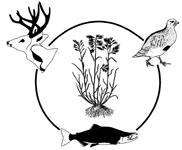Extension Wildlife & Fisheries Specialists Conferences

Triennial National Wildlife and Fisheries Extension Specialists Conference: 8th (1996)
Date of this Version
June 1996
Document Type
Article
Abstract
There are a variety of different distance learning technologies available to Extension educators including the use of compressed video on fiber optics, television courses, and satellite conferences and university courses. In this presentation we describe the use of satellite for presenting an introductory wildlife conservation course to advanced placement high school students in the commonwealth of Kentucky. The course was designed after the on-campus course: FOR 101: Introduction To Wildlife Conservation, and was offered for 3 semester hours of college credit. The course was developed as a cooperative venture by the University of Kentucky and The Kentucky Educational Television Station (KET). KET provided the studio, equipment, and satellite uplink time, and the University of Kentucky provided the primary instructor, assistant, and producer. The course aired from 12:00 (noon) until 12:50 on Monday, Wednesday, and Friday. Six hundred students from 28 high schools took the course at their local high school. Three hundred fifty six students took the course for university credit (all students received high school credit), and 119 of those students passed with a letter grade of A, B, or C. Over half the students taking the course were seniors (55%), and 35% were juniors. Sixty six percent of the students were male, and 77% of the students indicated they planned on attending college. The primary reason for taking the course was an interest in wildlife conservation (37%), exposure to a college course (19%), college credit but not for a major (18%), and used for major requirements (15%). These data indicate the course is providing advanced placement students not planning on a career in wildlife conservation an opportunity to learn more about wildlife conservation. More than 65% of the students lived on <15 acres of>land, indicating the primary audience was urban dwellers. Other topics discussed in the presentation included pros and cons of this type of distance education and other data related to students' opinions about learning with the use of this technology. A plea was made for video footage on management practices, ecosystems or habitat types, and wildlife from all specialists.


Comments
Published in W. Daniel Edge, ed. Proceedings of the 8th National Extension Wildlife and Fisheries Specialists Workshop: Educational Challenges for the 21st Century. [1996] Corvallis, Oregon: Oregon State University, 1998.